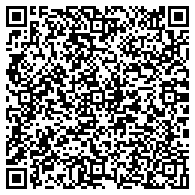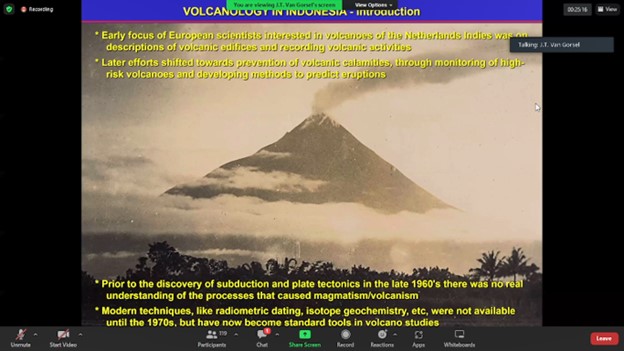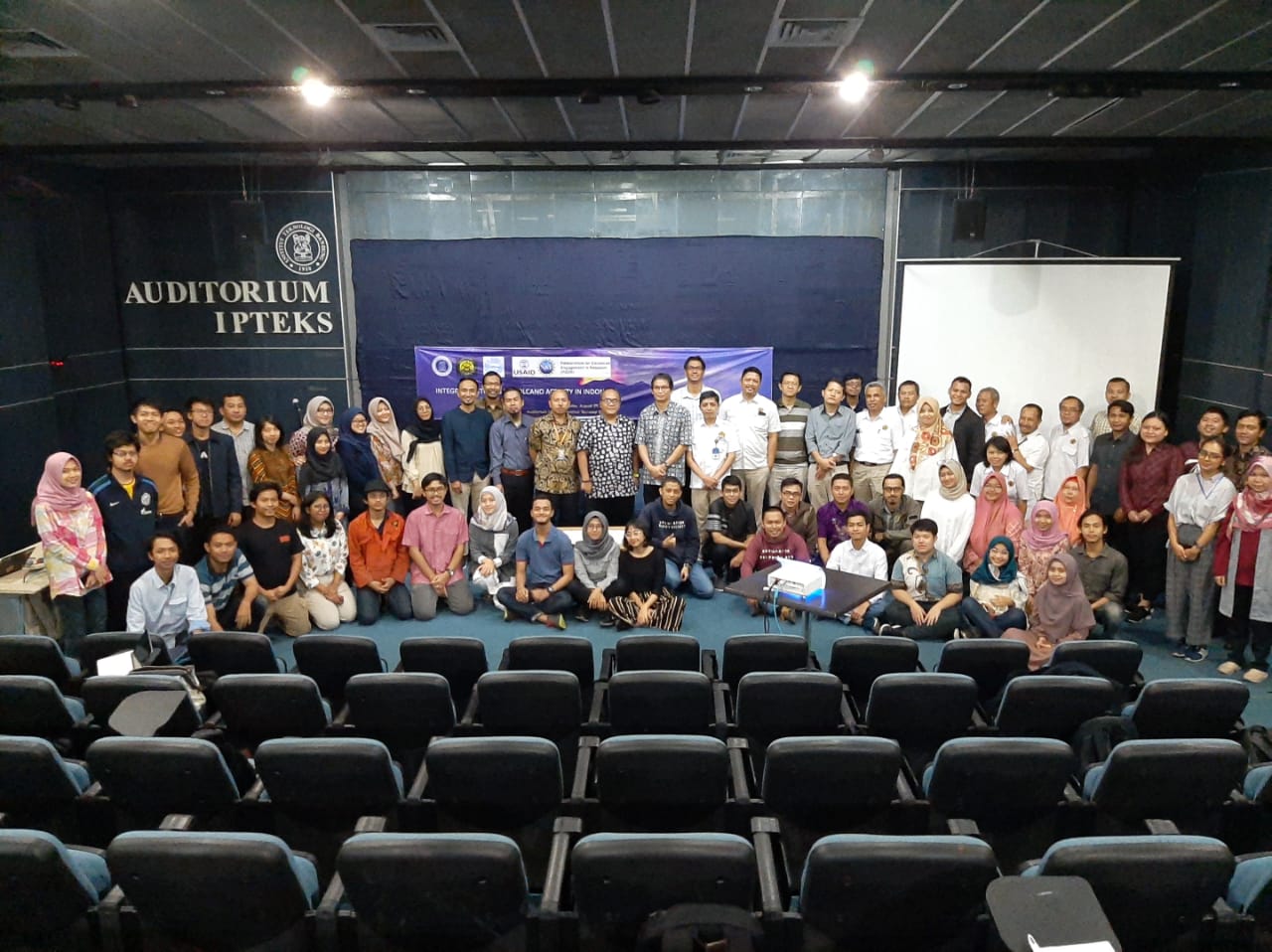Observing Volcanoes from Space: Standards for Monitoring Volcanoes in Indonesia

BANDUNG, itb.ac.id— The GL5002 (Capita Selecta I) study course in the geological engineering major welcomed Alessandro Novellino from BGS (British Geological Survey) as the guest lecturer. The class held on Thursday (30/9/2021) was titled “Observing Volcanoes from Space” with themes of geology, geochemistry, and geophysics of volcanoes.
The lecture began with a speech by the Dean of FEST (Faculty of Earth Sciences and Technology) ITB, Dr. Irwan Meilano, S.T., M.Sc. He stated that the issues that would be brought up are relevant in Indonesia. “Even with strict monitoring, volcanic activities are still difficult to predict.”
Alessandro then started the class with a short description of BGS. Since 1835, the organization collects worldwide geological data via surveys and 3D models of geological features, minerals, waste, and natural disasters. These records are often used in the academic, administrative, and private sectors for scientific research and purposes.
(EO) Earth Observation is effective in terms of time and budget- it is long-lasting and non-invasive. It takes advantage of remote electromagnetic sensors without being in contact with the object. Using reflected solar radiation directed to satellites, the radiation is detected by passive remote sensors on Earth. Another method includes the capturing of reflected signals transmitted by satellites.
Because of the many active volcanoes in Indonesia, satellite imagery is crucial for monitoring their activities. Most volcanoes are instrumentally unreachable for various factors like seismic activities and gas emissions. Thus, satellites can present measurements when ground-based observations are not possible to conduct due to remoteness.
The Krakatau Islands comprise several islands such as Sertung, Panjang, Rakata, and the Anak Krakatau volcano. “Around 6 million people live within the 100km radius from this volcano, so the monitoring of this volcano is a serious matter,” Alessandro stated.
The Multispectral Satellite is stationed to watch the coastal lines, vegetation changes, tsunami trim lines, and mapping of erupting materials. Its radar is used to examine collapsed areas while its plume elevation can estimate the number of volcanic ashes and eruption rate to establish danger zones.
Alterations in coastal lines can be impacted by volcanic materials, which flow to the beach and form deposits that affect the shorelines. Hence, satellites are deployed to inspect changes in the islands' profiles and detect the presence of volcanic materials. Additionally, shifts in coastline vegetation are caused by volcanic earthquakes that trigger tsunamis.
Reporter: Ananta Muji (Sistem dan Teknologi Informasi, 2019)
Translator: Ruth Nathania (Teknik Lingkungan, 2019)

scan for download





